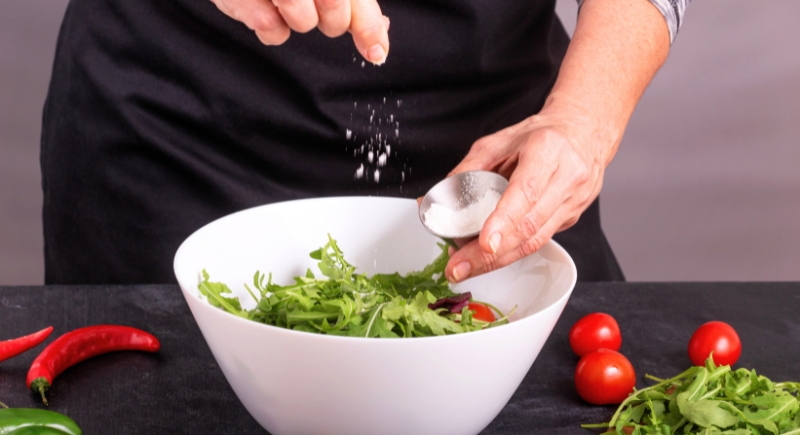The Secret Ingredient That Makes Restaurant Salads Taste So Good
Salads seem simple enough to prepare. Still, the version you make at home rarely matches the one served at a restaurant. The greens look similar, the toppings are familiar, and you might even use the same type of dressing. Restaurant salads still just taste fresher and more balanced. The difference is in the technique. There’s also a small but crucial step that many home cooks overlook.
Seasoning Is The Real Secret

Image via iStockphoto/rustamank
Restaurant salads taste better because chefs season everything along the way. The greens, vegetables, and toppings each get a light touch of salt before the dressing is added. Every bite tastes balanced because the seasoning is evenly distributed throughout the ingredients.
The foundation of this process is the salt, as it draws out the natural flavors of the vegetables. However, what really helps the dressing cling to the leaves is that restaurant chefs make sure the greens are completely dry before tossing. Restaurants often chill the greens separately after washing and drying them to keep them crisp, and then season them lightly before dressing.
Salt should be used sparingly, since too much can cause delicate greens to wilt. Salt also doesn’t maintain firmness; crispness comes from freshness, dryness, and cold temperature. When paired with the right level of acidity, salt harmonizes the richness of oil with the freshness of vegetables.
Restaurant kitchens constantly taste and adjust as they go. A vinaigrette with too little salt tastes flat, while too much can overpower the other ingredients.
Technique Makes The Difference
You don’t need restaurant equipment to make a great salad. The difference between an average salad and a great one comes down to seasoning as you go.
Homemade dressings can achieve the same results. While store-bought dressings can taste fine, homemade versions often seem fresher because you control the balance of salt, acid, and fat. A simple dressing made with oil, vinegar, and salt can taste cleaner and more natural. The trick is to use just enough to coat the greens rather than soaking them. When the ingredients are seasoned well, the salad needs less dressing overall.
Restaurants approach salad prep as carefully as any other dish. Greens are washed in cold water and dried completely so they stay crisp. They use large mixing bowls so ingredients can be tossed freely and coated evenly. The plates are intentionally chilled to keep the salad cool and fresh until serving, a method chefs confirm helps maintain texture and prevent wilting. Even the presentation is intentional, with each ingredient carefully placed to achieve balance and color.